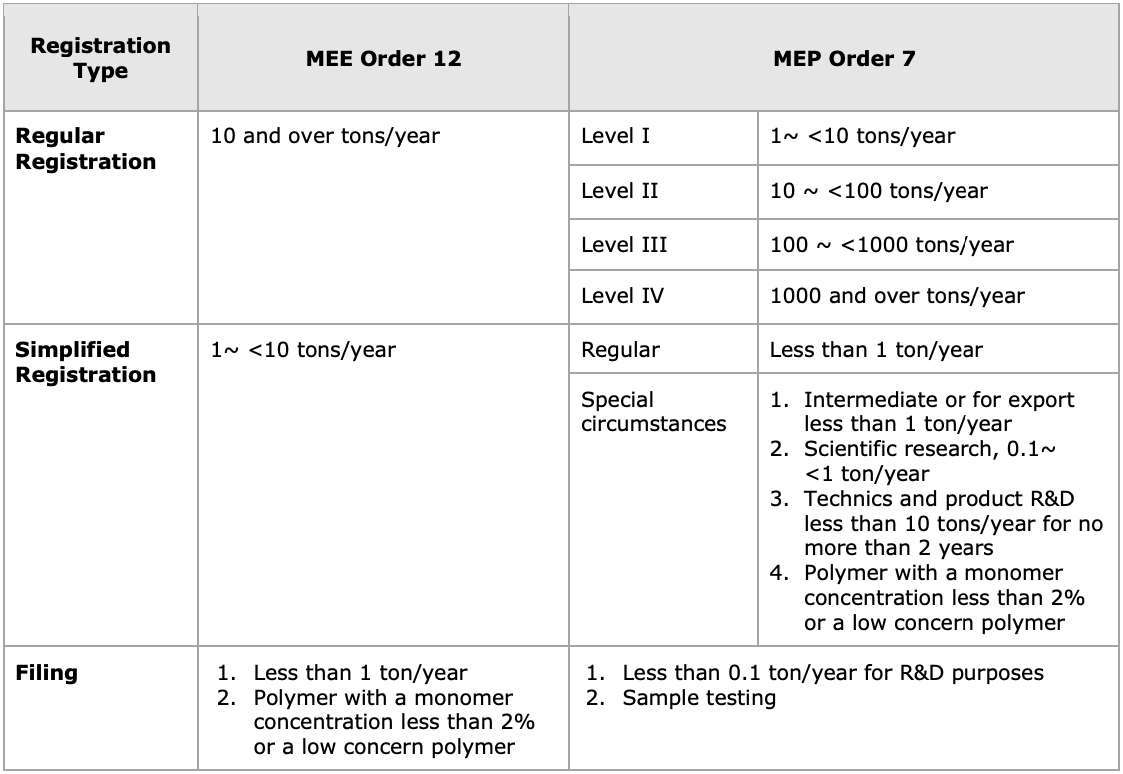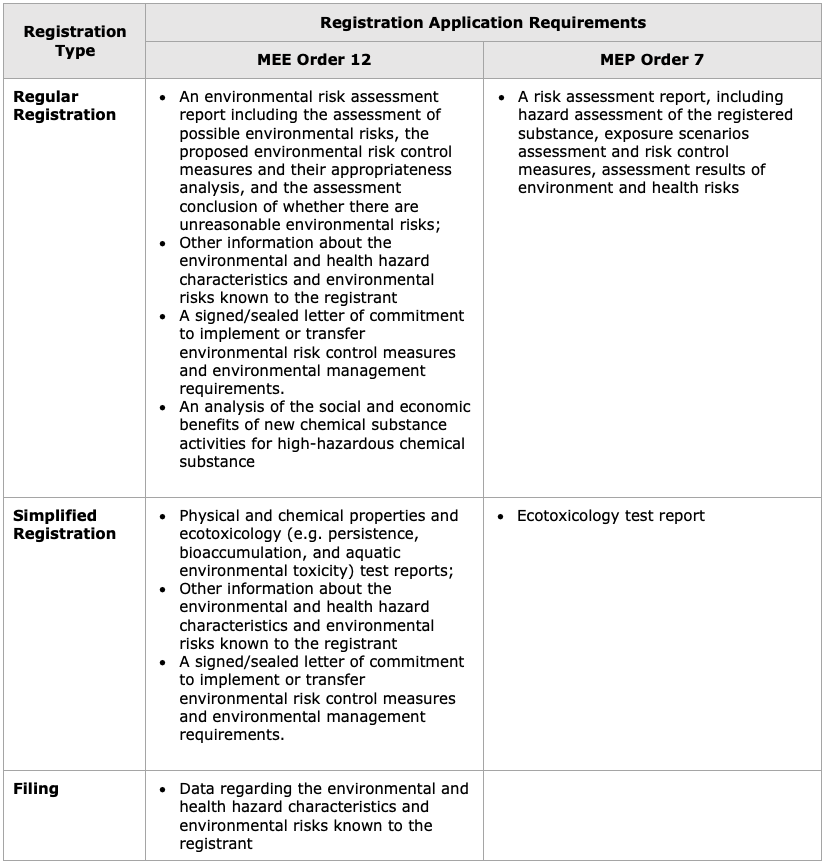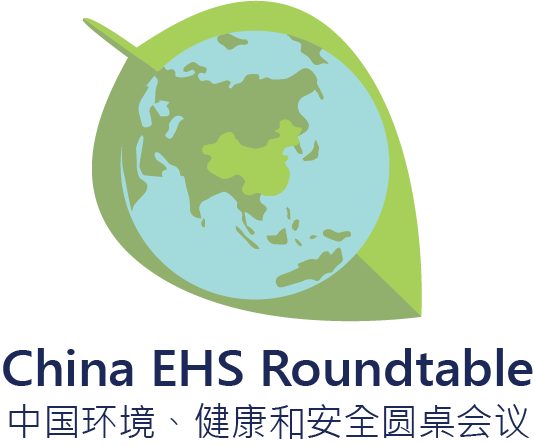What’s New – China Revises its New Chemical Substance Management Rules
On April 29, 2020, China’s Ministry of Ecology and Environment (MEE) released the Measures of Environmental Management and Registration of New Chemical Substances (“MEE Order 12”)[1] – a revision of Measures of Environmental Management of New Chemical Substances (“MEP Order 7”). MEE Order 12 will take effect on January 1, 2021 (“MEE Order 12”).
MEE Order 12 introduces substantial changes to the registration system for new chemical substances, and will likely have significant impacts on producers, importers, processors of the new chemical substances. This alert intends to summarize the major changes of the new chemical substance registration system and highlights the compliance requirements for entities engaging in the production, import, and processing of new chemical substances.
Background
MEP Order 7 was implemented in 2010. China’s MEE initiated work to revise and update this core chemicals management law for China, by issuing a first draft for public comments in July 2019 and circulating a notification to the TBT of the WTO for member comments in September 2019. On February 17, 2020, the revision was approved in a ministerial meeting and on April 29, 2020, MEE officially issued Order 12 with an effective date of January 1, 2021. It will supersede Order 7 on that same day.
Key Changes in MEE Order 12
The new revision makes substantial changes to the MEP Order 7. The revision expands the type of exclusions from its scope, simplifies the registration types, changes the application requirements, and clarifies the responsibility of the producer, importer, and processor on handling the new chemical substances. Below are the key changes are likely to be of interest to producers, importers, and processors of the new chemical substances:
Exclusions from Scope. MEE Order 12 excludes from its scope an imported new chemical substance stored in the customs supervision area after being imported and then exported without any processing from its applicable scope (Article 2). Further, chemicals in feed and fertilizer are explicitly excluded from scope (along with medicines, pesticides, veterinary medicines, cosmetics, food, food additives, and feed additives) unless they are used in other industrial processes (Article 2).
- Registration categories and data requirements. MEE Order 12 simplifies the registration types and adjusts the registration application requirements. The tables below summarize those changes:
Comparison of Volume Threshold

Comparison of Registration Requirements

- Data Protection. MEE Order 12 clarifies IP protections available to registrants. In particular, the registrant is required to submit the necessary explanatory materials for its application of IP protection along with the registration application. The term of protection for identification information, e.g. the name of new chemical substances, shall not exceed five years from the date of registration certificates (Article 13).
- Highly hazardous New Chemical Substances. MEE Order 12 introduces a concept of highly hazardous chemical substances which refers to “chemical substances with persistence, bioaccumulation, and toxicity or chemical substances with high persistence and bioaccumulation, or other chemical substances with equivalent environmental or health hazards”(Article 52(2)). A registrant of highly hazardous chemical substances is required to submit an additional application document, i.e. an analysis of the social and economic benefits of new chemical substance activities, in the regular registration process in order to justify the registration of these chemicals of concern (Article 15). Further, the regular registration certificate of a highly hazardous chemical substance shall include one or more environmental management measures below: 1) limitation of the discharge amount or concentration; 2) requirements for implementing new-use environmental management controls when the substance is listed in the "Inventory of Existing Chemical Substances"; 3) submission of an annual report to MEE on manufactured/imported volumes, releases and implementation situations of environmental risk control measures and management requirements; and 4) other environmental management requirements (Article 26). If the registrant changes the use of registered highly hazardous chemical substances or other persons (rather than registrant) intend to use it for industrial purposes, a new registration shall be filed by producer, importer, or processor.
- Re-registration. MEE Order 12 specifies three situations where re-registration is required, i.e. 1) a change of the registered activity from import to production in China, 2) an intended change of environmental risk control measures, and 3) other circumstances causing the increase of environmental risks.
- Compliance Requirements. Under MEE Order 12, producers, importers, or processors are expected to take effective measures to prevent and control the environmental risks of new chemical substances. In particular, they are required to fulfill the following key obligations:
- Registration of new chemical substance. Producers or importers are required to obtain the registration certificates prior to production or import of the new chemical substances (Article 4). Further, producers, importers or processors of new chemical substances that are included in the "Inventory of Existing Chemical Substances in China" and that are subject to a “new use environmental management system” shall obtain new registration certificates if the substance is intended for uses other than registered uses (Article 11). An administrative penalty of RMB10K-30K will be imposed on the omission of the registration and no registration application of such violator may be accepted within a year (Article 48).
- Prevention and control of environmental risks. Entities engaging in research, production, import, and processing of new chemical substances are required to take effective measures to prevent and control the environmental risks and liable for the damage caused by the new chemical substances (Article 7). Producers, importers, or processors are required to convey the environmental risk control measures and management requirements to their down-stream customers (Article 39). In particular, the producers or processors of regularly registered new chemical substances shall implement environmental risk control measures and management requirements and disclose that information on their official websites or other methods easily accessible to the public (Article 40). Failure of performance of these obligations can result in a fine of RMB 10k-30K and violators may be debarred from new registration within a year (Article 49).
- Implementation of traceable management system. In addition to providing the relevant registration/filing information to its downstream customers, producers, importers, and processors are required to establish a record-keeping system for their activities with respect to new chemical substances, faithfully record the time, quantity and use, and implementation of environmental risk control measures and environmental management requirements (Article 39). Moreover, the certificate holder is required to make a first time activity report within 60 days and submit the annual report by April 30 of the following year to the relevant authority if so required by the certificates (Article 41). Further, producer, importer, and processor shall promptly report to the relevant ecological and environmental department on new environmental or health hazard characteristics or environmental risks if they so discover and take timely measures to eliminate or reduce environmental risks in case of the increase of environmental risks (Article 42).
- Registration of new chemical substance. Producers or importers are required to obtain the registration certificates prior to production or import of the new chemical substances (Article 4). Further, producers, importers or processors of new chemical substances that are included in the "Inventory of Existing Chemical Substances in China" and that are subject to a “new use environmental management system” shall obtain new registration certificates if the substance is intended for uses other than registered uses (Article 11). An administrative penalty of RMB10K-30K will be imposed on the omission of the registration and no registration application of such violator may be accepted within a year (Article 48).
What is Next?
MEE Order 12 envisions a simplified registration system for the new chemical substances while also strengthening the supervision of those chemicals in the after-approval stage. It represents a significant shift in Chinese chemicals management policies with major implications for importers, producers, and processors of chemicals in China. In the next months, we expect the revision of Guidance on New Chemical Substance Registration and other implementation documents to provide practical guidance to companies for compliance with the registration application and other compliance requirements.
[1] Measures of Environmental Management and Registration of New Chemical Substances, http://www.mee.gov.cn/xxgk2018/xxgk/xxgk02/202005/t20200507_777913.html
Beveridge & Diamond provides strategic, business-focused counseling services to multinational companies with interests in China, including advice regarding imports and exports. Supported by our International Environmental Law, Global Product Stewardship, and Chemicals practices, as well as our in-house Chinese language capabilities, we advise clients on a variety of environmental, health, and safety (EHS) and trade issues under China’s rapidly expanding laws and regulations. Our China EHS Roundtable provides attorneys and other professionals from multinational companies a valuable forum to learn about and discuss China’s latest EHS regulations, and related issues associated with enforcement risk management, regulatory compliance, supply chain management, and sustainable development. For more information, please contact Weiwei Luo.










